As promised a few weeks ago, I am dedicating this entire post to one of my favourite pieces from my closet: this Dries Van Noten skirt.
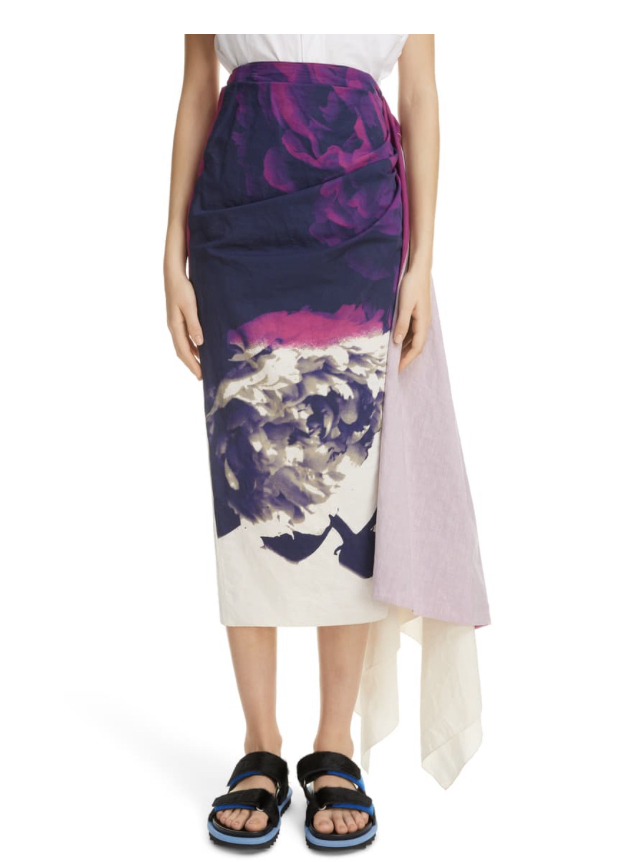
But rather than just wax rhapsodic about it, my goal today is to use it as an example of quality workmanship to look for, whether like me you’re a dedicated thrifter or whether you prefer to shop retail. I have said this many times, and it bears repeating: a designer label or a high price tag is no guarantee of quality. Conversely, just because something doesn’t carry a particular label doesn’t mean that it’s not good quality; even fast fashion brands like Zara will occasionally put out pieces that are as well made as their designer counterparts.
Let’s start with fabric. This is the trickiest part because (a) I am not a textile expert, and (b) it’s hard to describe the concept of “hand feel”. If you’ve spent long enough at a thrift store, you will start to be able to pick quality materials from touch alone. Acrylic feels different from wool or cashmere. Silk feels different from polyester, for the most part anyway; polyester comes in a LOT of different varieties, and some are just as nice as silk but can be easier-wearing. There is thin linen and thick linen; same with cotton. As well, there is the type of garment and its purpose to consider, because that will impact what material works best. Personally, I prefer clothes that have shape to them, as opposed to more body-con pieces that mold to the body, so I tend to look for heavier weight fabrics. Keep in mind, though, that I live in a temperate/cold climate, so that is a factor as well. Generally, though, the thinner or more see-through a fabric, the lower the quality (no matter how high the item is priced cough tissue-thin designer t-shirts cough).
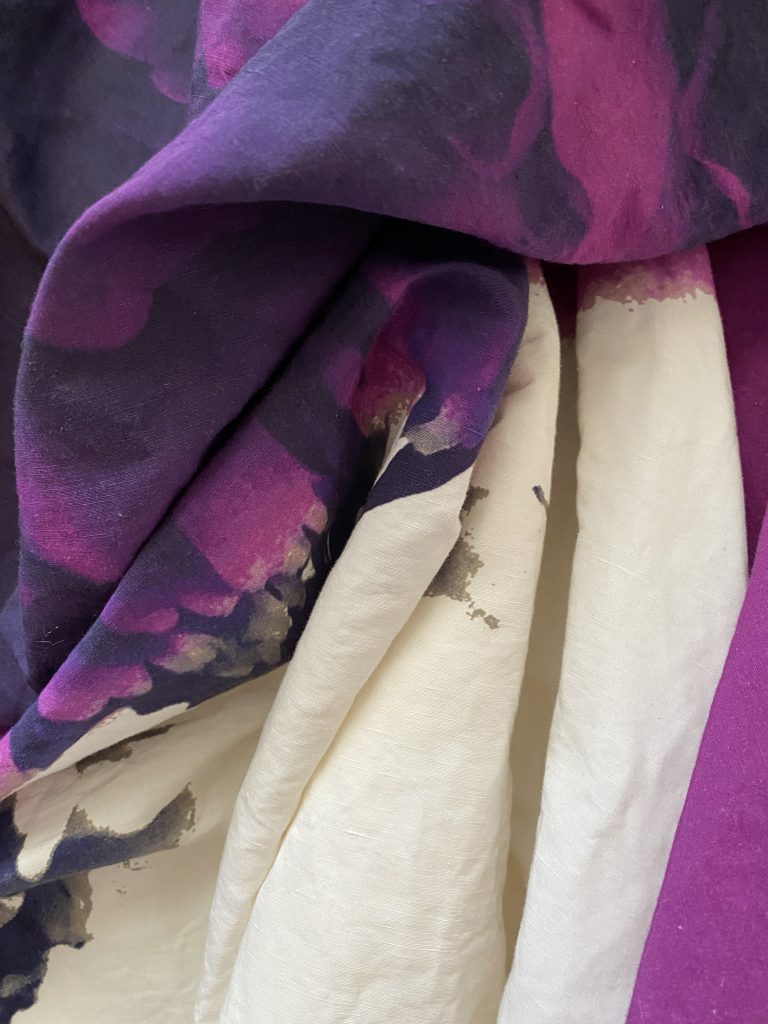
With this skirt for example, the material is a cotton-linen blend. It’s stiffer and heavier than cotton, which gives it shape and drape – important for this type of design. But it isn’t as wrinkle-prone as linen, and has a smoother “finish”; again, important to the presentation and overall appearance of the skirt – you don’t want to look like you wrapped a literal potato sack around your waist. In general, I am also a big fan of silk-linen blend fabrics which are similar. Sarah Pacini is a designer who uses them a lot, and I love the way her clothes look as a result – I call it “wearable luxe”.
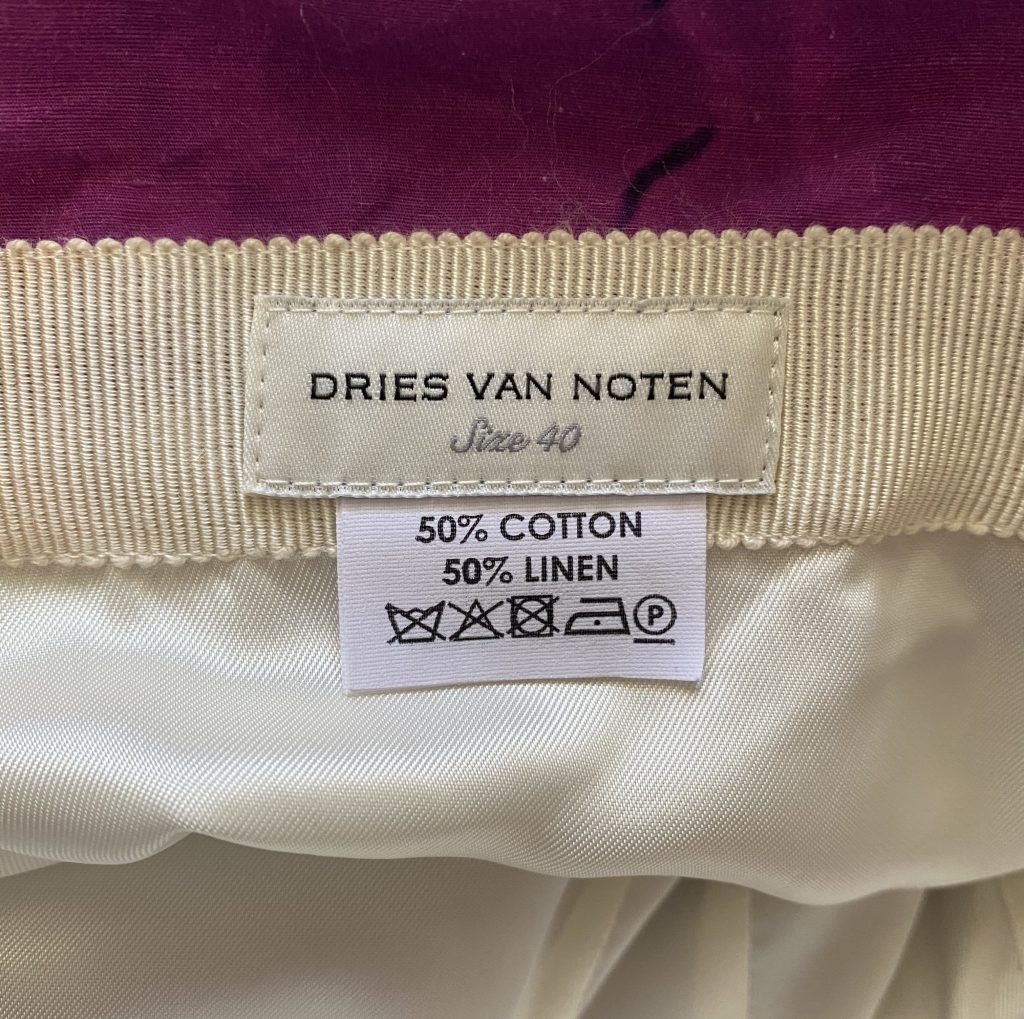
The inside finishing of a garment – seams, trim, hem, etc. – is a huge giveaway for quality. Look at the label above. It’s neatly sewn: no loose threads, even stitching. Look at the way the ribbon detail is attached; it’s flawless.
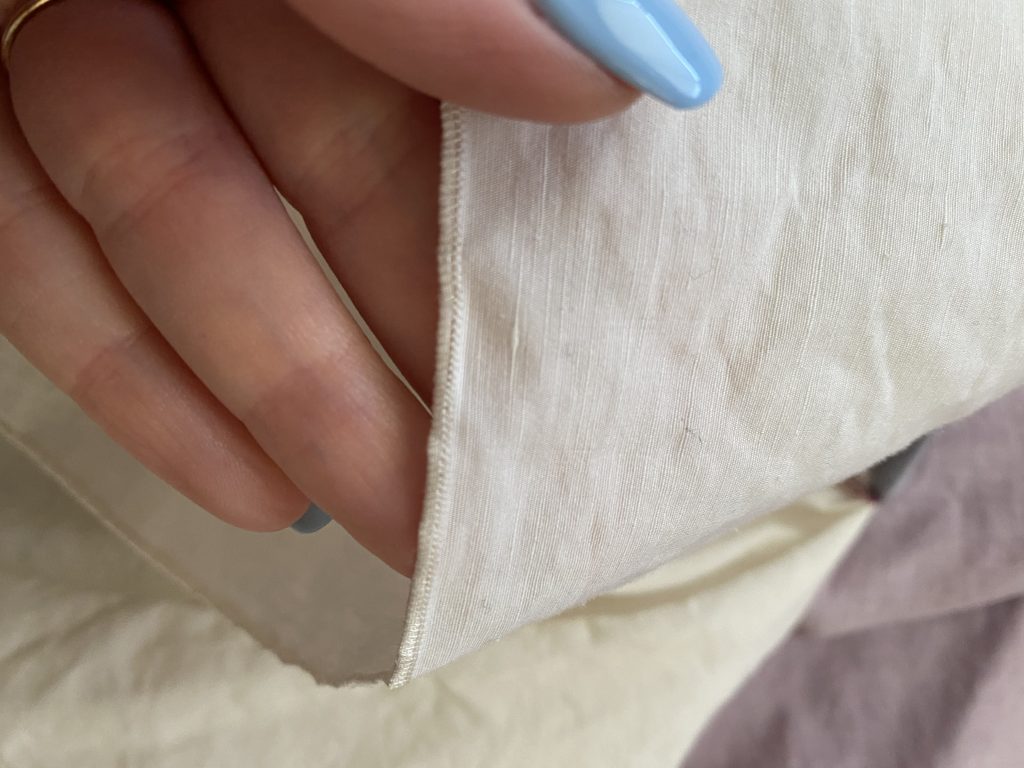
This is the bottom hem of the top layer.
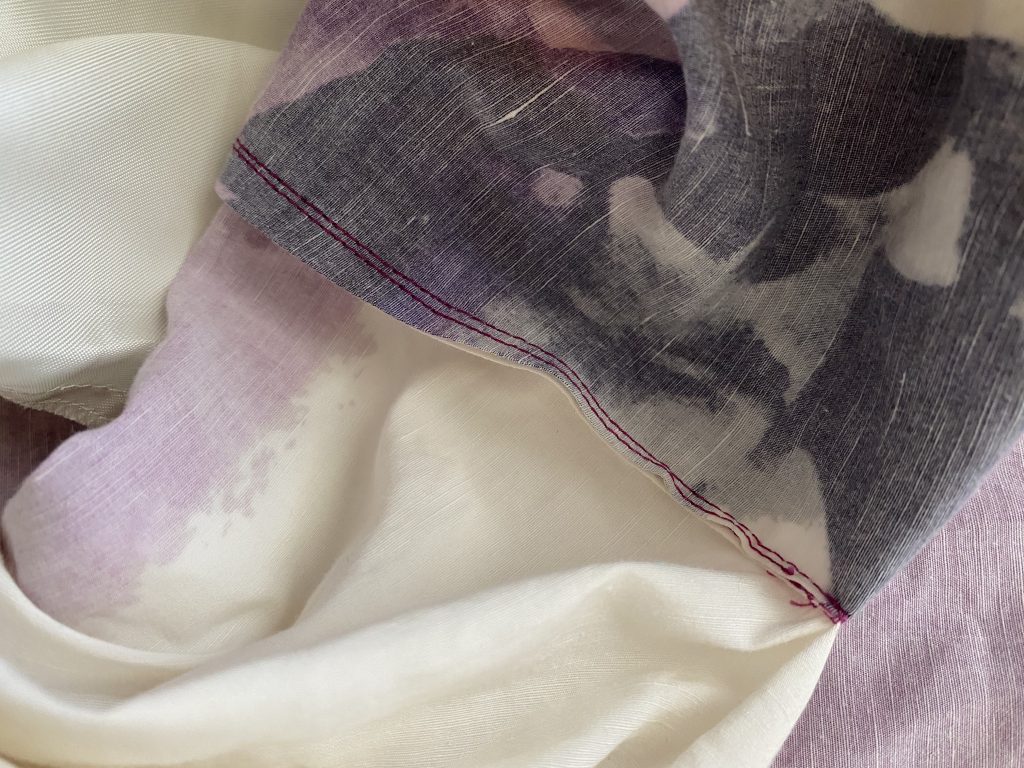
This is the inside seam.
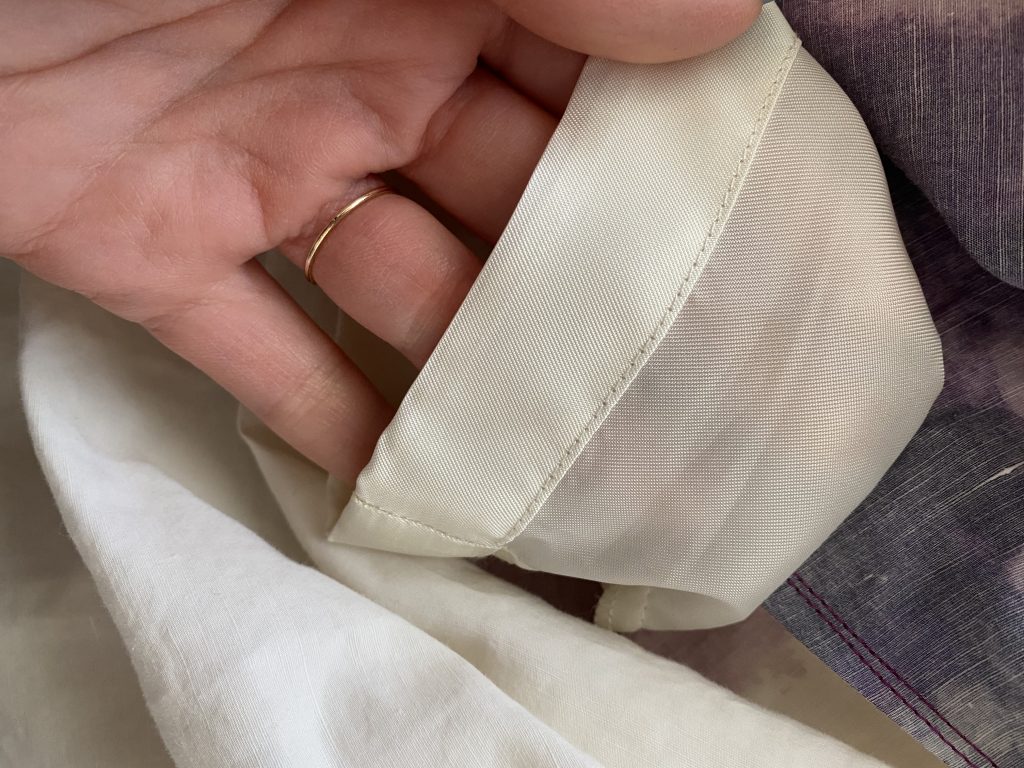
This is the hem of the skirt lining. Again: everything looks neat and even and durable. These details are important because this is where brands will often cut corners. A garment might look really attractive on the front, but it’s the “underbelly”, so to speak, that will tell the true story. Turn it inside out and have a close look.
Design details are another way to spot quality. Some can be really minor things which, nevertheless, can make a big difference in the wearability of the garment. Women often complain about the lack of pockets in dresses and skirts. I am not fanatical about this; pockets are nice, but they’re not a must-have for me. [This skirt doesn’t have any, and I can’t say that it’s worse because it.] On the other hand, I am fanatical about bra keeps – those little hooks that hold your bra straps in place under thin-strapped dresses. It annoys me to no end when companies skimp on this and don’t add them when the dress design calls for it; they are literally made from one small snap and a piece of thread. Yes, they are fairly easy to add after the fact, but if you’re selling a (thin-strapped) dress for $200 and up, this should be a standard feature. Gah!
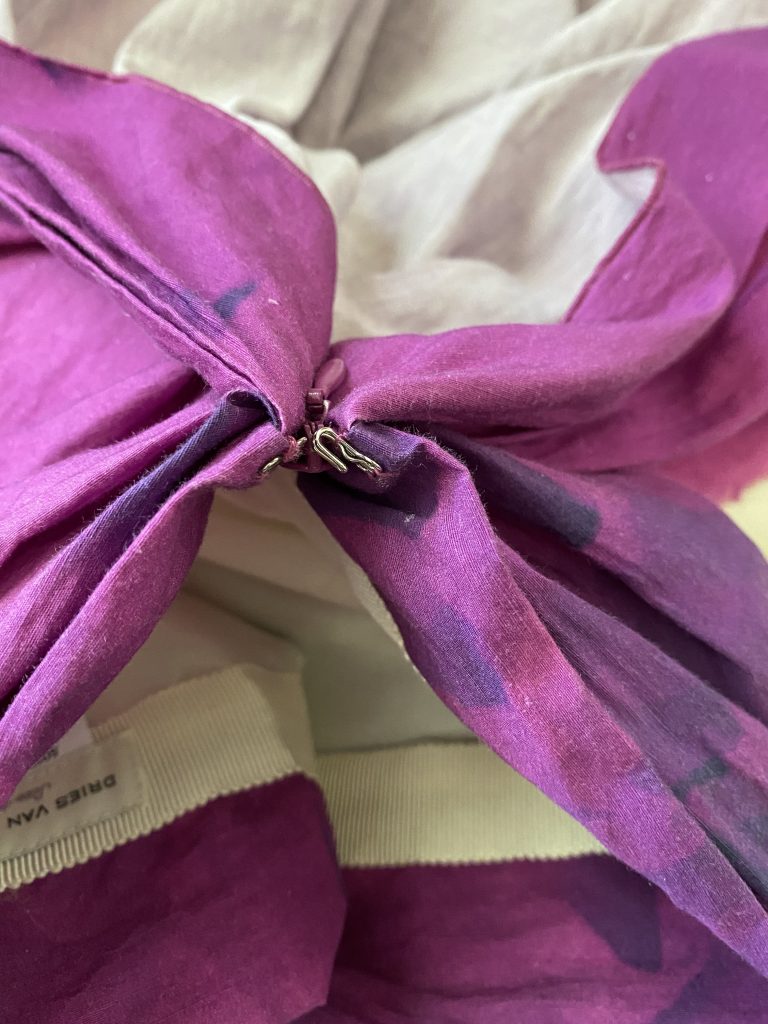
Another small design detail that can be easily overlooked is a hook-and-eye closure at the top of a zipper. I never gave these much thought until I came across a skirt that didn’t have one … and had to constantly fiddle with the zipper every time I bent over and it opened ever so slightly. These closures also help you to zip up the skirt more easily and without catching the fabric.
Other design details are more unique. I think the moment I truly fell in love with this skirt was the moment I realized why I could sit in it so comfortably. Let me explain.
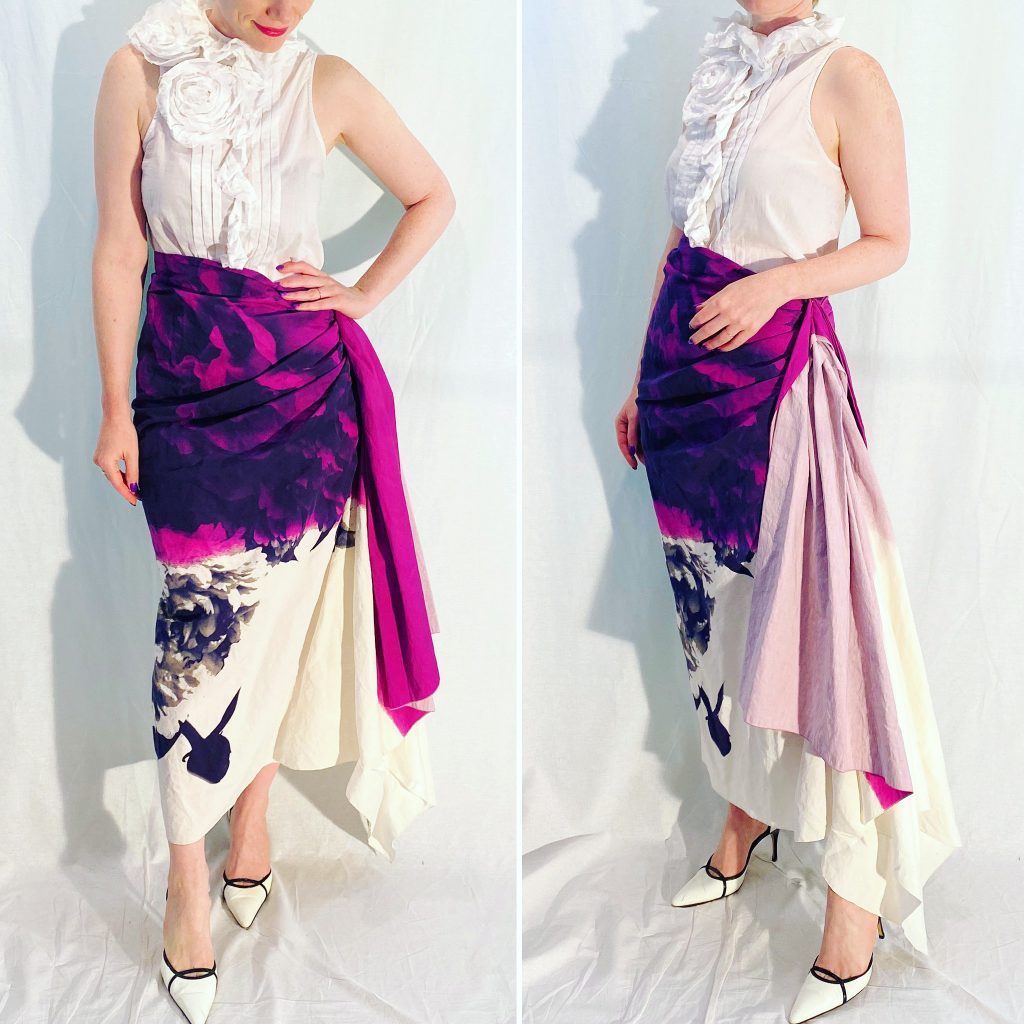
You can see the way this skirt falls around the body – it’s intended to look like a sheath, with the skirt getting narrower towards the bottom. It’s a stunning shape, but often hard to walk and sit in because of that narrow opening. But not this skirt.
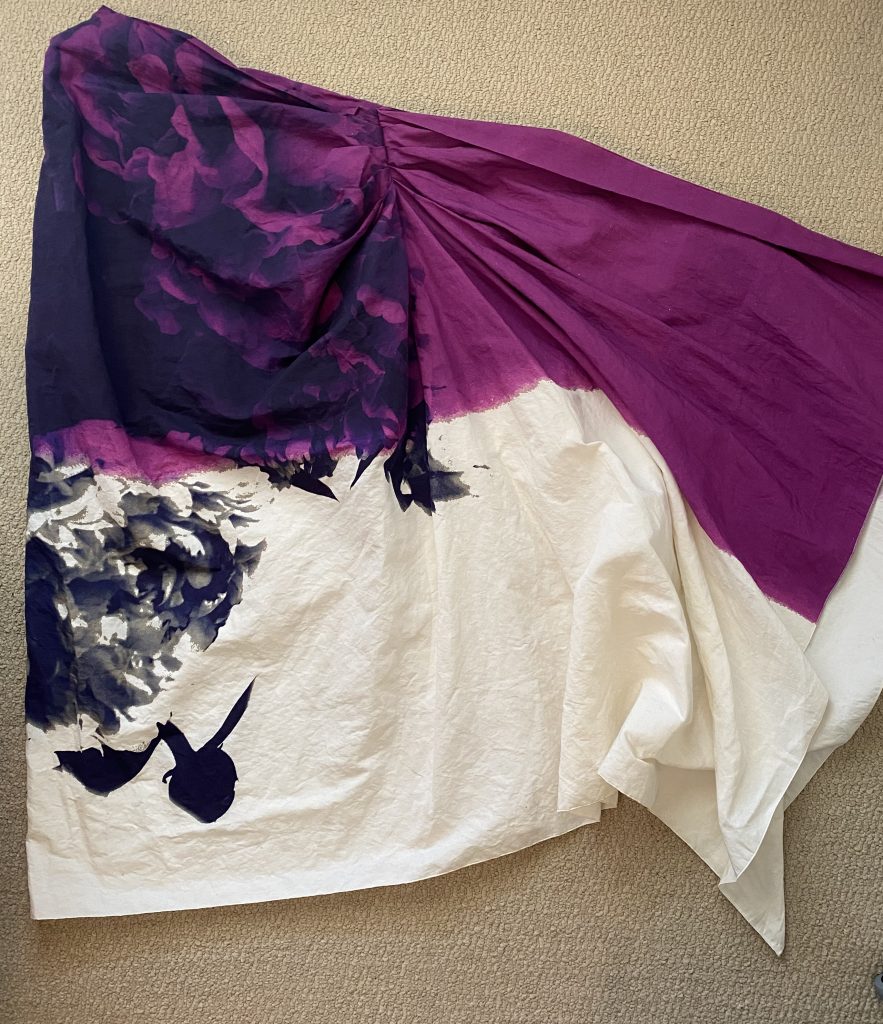
When I “fan” it out flat, you can see that it’s actually not any narrower at the bottom. Moreover …
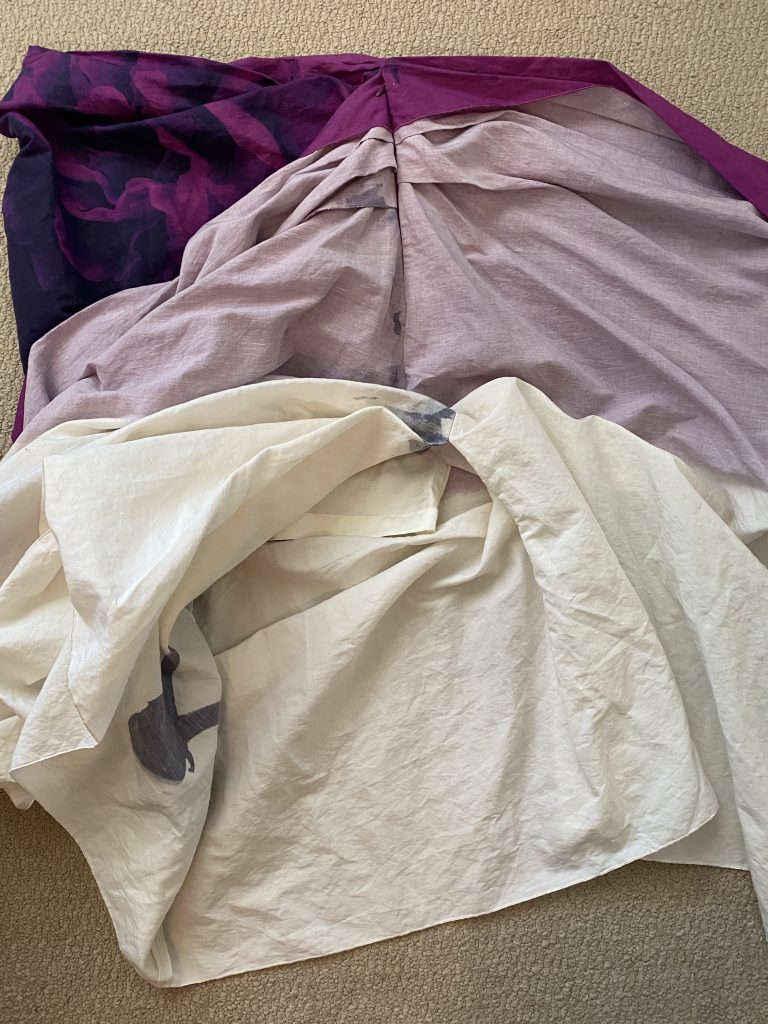
The bottom half of the skirt is merely draped, not actually sewn together like a tube all the way down. The lining goes to the knees, and the skirt itself is sewn together only to that point as well; from the knees down, it’s opened on one side (with the opening covered by the side drape). This makes it comfortable to walk and sit, while maintaining that very architectural shape. This is a clever design.
While this is a very specific example, I am always looking for design details that are unique AND make my life, as the wearer of the garment, more comfortable. Here’s another example, borrowed from a Yohji Yamamoto shirt I own: small buttons hidden inside the placket in the space between regular buttons to eliminate gaping. From the front, it looks like a normal shirt, buttons-wise; but the placket lies flat with no gaping, almost as if by magic.
The key with clever design is that someone has thought about the person wearing the garment, not just about what the garment looks like. Some of these details you can spot in the garment on a hanger, but some may only become apparent when you put it on. Remember, if you find that you have to fiddle with a garment and constantly adjust it while wearing it, even though it’s supposedly the right size, the problem isn’t you – it’s most likely poor design.
I would love to hear your tips on spotting quality, so please feel free to share in the comments.

I love that skirt and love the details. I am pretty good at knowing something is silk just from the touch…quite a unique skill to have but it comes in handy when thrifting.
Hi Adina, I don’t have any tips, but you came into my mind yesterday when I read the latest post of the British blog That’s Not My Age. Alyson is talking about an episode of her podcast with Oscar-winning costume designer Sandy Powell. At the bottom of the post you’ll find a link to a site where she is selling some of her clothes – including some Dries van Noten. Here’s the blog post: https://thatsnotmyage.com/creative-women-at-work/thats-not-my-age-podcast-award-winning-costume-designer-sandy-powell/
Thought you might like to read it.
Late to the game on this but what a great post! I wear sweaters all the time (cold office – cardigans in summer and pullovers in winter) and am realizing I will no longer buy anything with either acrylic or nylon any more. I was looking at a site I wasn’t familiar with and realized every tab that had a “blend” sweater with acrylic or nylon just got closed as soon as I read the fabric info. I’m too old to f with pilly sweaters any more 😉
Same here – I’ve learned my lesson when it comes to fabrics that don’t work for me and styles that aren’t comfortable. I am a sucker for a cool aesthetic but it’s gotta check off my other boxes now too.